 Kentucky’s athletic teams are no strangers to technology.
Kentucky’s athletic teams are no strangers to technology. From
Coach Cal and his heart monitors to the
soccer teams and Prozone’s performance analysis system, we’ve seen evidence that coaching strategy is moving past simple X’s and O’s on a chalkboard. And as a client of athletic analysis tech company Catapult Sports, Kentucky may be well-positioned to be on the forefront of the latest technological innovations in college athletics.
To recap,
the soccer teams acquired Prozone 3 to use in the soccer stadium this past fall; eight to twelve cameras are installed in the soccer stadium and used to track player and ball movement. The data is sent to a computer program and compiled into a 2D animation that allows coaches and managers to examine the team as a whole or position-by-position, including distribution maps, video clips, and a 2D recreation of the game.
Calipari, meanwhile, famously used heart monitors this winter to keep track of players’ exertion rate, sport zones, caloric expenditure, and heart rate during practices. With that information, Calipari and his staff were able to judge how much effort players were giving in practice and help the players adjust accordingly.
 Mandatory pause to pay tribute to the Cat with the biggest heart in UK history
Mandatory pause to pay tribute to the Cat with the biggest heart in UK history
In fact, High Performance Coordinator Erik Korem, who has been spearheading
the football team’s player development and training in Mark Stoops’ first off-season, endorses Catapult products on their
website:
“You simply couldn’t measure the work rate of today’s football team without these tools. In a game where the margins for success are measured in inches, I’ll take that kind of advantage.”
Jon Lipsitz, Kentucky’s women’s soccer coach and a self-described “absolute geek about sports science,” speaks glowingly about Korem’s value within Kentucky’s athletics department. Korem, who is currently in Australia (where sports science is much bigger than it is in the United States), set Lipsitz up with a colleague at the Seattle Sounders professional soccer club who is the foremost sports scientist for soccer. Lipsitz was able to meet with researchers at Nike Sparq, the advanced training sports science division of Nike, and learn more about the latest technology and how to use it properly.
“Sports science is already huge in Australia, New Zealand, and England- and it’s coming here next,” noted Lipsitz.
And what specifically is next on the horizon?
GPS technology. In an article on Business of College Sports last week,
Mark Burns argued that GPS technology could be “the next big thing” in college sports. Catapult Sports has engineered a way to use GPS tracking to monitor athletes’ performance:
For student-athletes to utilize the software, OptimEye tracking “bugs” are worn by players in a tight-fitted jacket, with monitors being analyzed on the sidelines by athletic trainers and strength and conditioning coaches; the tracking technology monitors 20 unique metrics such as acceleration speed. Additionally, it allows coaches to make decisions in real time, and it also gives them a full picture of how hard their student-athletes are working and what it’s doing to their bodies.
“The biggest value is to get that inside information on each individual athlete,” Gatz said. “You can get stuff that you wouldn’t normally see just by standing on the sidelines – the heart rates, the load production, that type of stuff during the course of a match.”
 Catapult's OptimEye units
Catapult's OptimEye units
According to Lipsitz, the biggest benefit of having all this information is
the ability to predict and thus prevent injury.
“It’s great to see the workload that people do. What the GPS units give you is how much of their work and total distance is high intensity- acceleration, deceleration, stuff like that. Let’s say in a soccer game, we have a kid who runs seven miles in a game.
Seven miles isn’t seven miles. How much is sprinting or decelerating? That information is going to lead to decoding muscle soreness and injury.
“One of the huge things about using heart rate monitors, GPS, sports science in general- injury correction. Coaches can look at players’ information and see the load they’ve taken, especially decelerations which are very hard on your body.
You can see when they’re about to be injured and pull back on training for a couple of days.”
Building a smarter and healthier athlete doesn’t stop at GPS tracking inside stadiums and practice facilities. Catapult also asks players to answer questions about emotions, sleep habits, and diet to give the teams specific performance enhancement lifestyle strategies (an unsurprising find?
Players perform significantly better with a solid night’s sleep. Tin Roof visits should be kept to a minimum during the season, it seems).
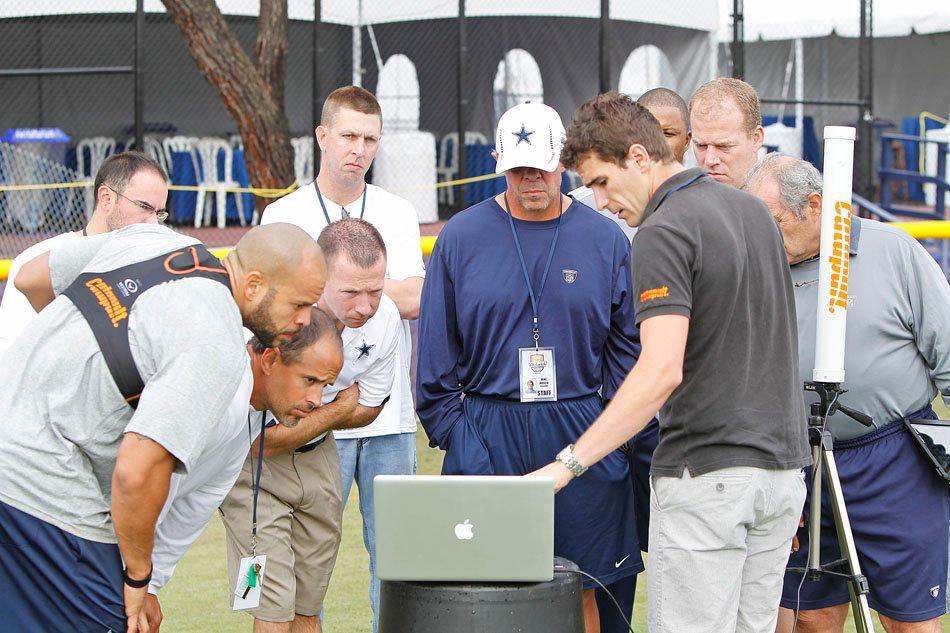 Fellow Catapult clients, the Dallas Cowboys, using the technology in practice
Fellow Catapult clients, the Dallas Cowboys, using the technology in practice
There’s no denying that the cost is steep-
Catapult charges teams an average of $100K to utilize its software, a package that includes regular upgrades and analytical software. However, the results are backed up by
research that shows how tracking technology is improving athlete’s performances (agility, speed, acceleration, force, and more) while decreasing injuries by monitoring muscle fatigue levels over the season. And as a big name athletics school with an AD who is incredibly supportive of these innovative endeavors, Kentucky is in a great position to take advantage of this technology.
“I’ve never seen an administration that is so supportive doing whatever we need to do to make sure our student athletes are treated properly and well, and giving our guys everything possible to compete at the highest level,” gushes Lipsitz.
“If there’s something that’s going to help our athletic program, Mitch wants to hear about it. He’s very special that way.”
Speaking of advantages of this technology, let’s think about this one:
recruiting. High school students these days are more attuned to technology than ever before; hell, reading over Kentucky athletes’ tweets, I don’t recognize half the apps they’re referencing (I’ve barely got a hold on Vine. And what on earth is Kik?). So including state-of-the-art technology in recruiting pitches seems like a no-brainer, right up there with spotless facilities and elite coaches.
Sure, some might argue this is just another notch on the bedpost for the haves of college athletics- one more advantage to separate the big and rich schools from the others. Lipsitz, however, doesn’t see it as significantly different from any other advantage schools with money have.
“Schools with money have a better opportunity to do things with academic support, nutrition, travel, in every way. It’s just one of the other advantages.
Another great thing about Mitch, he’ll say if it’s important and the student athletes need it, we’ll get it, but we’re still practical about how we spend our money. I think everything that we do that is special and innovative and advanced is very helpful with recruiting.”
Although cost seems like the obvious disadvantage,
teaching coaching staffs how to correctly use the technology will be key in terms of how successful teams are. If staff doesn’t know how to use the information correctly, a $100,000 investment will ultimately be worthless.
“Just because you have stats in front of you doesn’t mean you know how to use it properly,” warns Lipsitz.
“You can have every statistic in the book about someone’s movement and recovery. How you use it properly is the challenge.”
(Hear that, Jonathan Schuette? You’re VERY employable)
Burns argues that some coaches will resist the technological advancements- apparently,
some old dogs won’t want to be taught new tricks. Sure, maybe it seems like we’re inching closer to the bionic athlete, but would any coach with a strong thirst to win ignore potentially game-changing technology?
When I asked Lipsitz his thoughts on this argument, he laughed, saying
“I heard a joke on my trip out west: ‘If you’re a sports scientist and you get hired by an NFL team, get ready to be fired by the end of the season.’ If a coach is old school, the last thing they’ll want to hear is that a player is going to be pulled out of training because a computer told us they’re likely to get injured. It goes against the old school ‘work them to the bones’ mindset. Resistance comes from ‘this is new, it’s something that’s being shown on a computer screen and paper.’
“It’s no different than how it took me quite awhile to convince my mom to text. But once she realized how quickly she could get in touch with my sister and my by texting, she loved it- but it took her two years to do it. That’s an example of how difficult it is to get new technology into a situation that works.”
 *Not Coach Lipsitz's mom. That I know of.
*Not Coach Lipsitz's mom. That I know of.
Unless it’s Bob Knight making a return to the sidelines, I believe that coaches will be open to this new wave of technology- if it’s presented correctly and if they learn how to use it properly.
Athletic departments facing this predicament will have to find ways to make the information appealing to coaches, presenting the data with lots of colors and graphs rather than just black and white printouts of straight information. With technology such as Catapult’s becoming more widespread and available to college teams, coaches would be unwise not to at least experiment with the units as a way to better understand their athletes in practice. And as we all know, you practice the way you play; more efficient practices will translate into game time decisions and ultimately, more wins. It can’t be overstated how fortunate Kentucky is to be a financially secure school with the ability to procure these coveted units- and how exciting it is to have coaches and staff who are ready to embrace the future of practice.
Bottom line it for us, Coach Lipsitz:
“In the end, the team that uses this technology properly will have lower injuries and higher success. No doubt about it, that’s what will happen.”
Can I FINALLY throw in a “Catapult”-ing into the future pun? UK, welcome to the robot family.
It's always a pleasure to write about fellow robots. @KristenGeilKSR  Kentucky’s athletic teams are no strangers to technology. From Coach Cal and his heart monitors to the soccer teams and Prozone’s performance analysis system, we’ve seen evidence that coaching strategy is moving past simple X’s and O’s on a chalkboard. And as a client of athletic analysis tech company Catapult Sports, Kentucky may be well-positioned to be on the forefront of the latest technological innovations in college athletics.
To recap, the soccer teams acquired Prozone 3 to use in the soccer stadium this past fall; eight to twelve cameras are installed in the soccer stadium and used to track player and ball movement. The data is sent to a computer program and compiled into a 2D animation that allows coaches and managers to examine the team as a whole or position-by-position, including distribution maps, video clips, and a 2D recreation of the game. Calipari, meanwhile, famously used heart monitors this winter to keep track of players’ exertion rate, sport zones, caloric expenditure, and heart rate during practices. With that information, Calipari and his staff were able to judge how much effort players were giving in practice and help the players adjust accordingly.
Kentucky’s athletic teams are no strangers to technology. From Coach Cal and his heart monitors to the soccer teams and Prozone’s performance analysis system, we’ve seen evidence that coaching strategy is moving past simple X’s and O’s on a chalkboard. And as a client of athletic analysis tech company Catapult Sports, Kentucky may be well-positioned to be on the forefront of the latest technological innovations in college athletics.
To recap, the soccer teams acquired Prozone 3 to use in the soccer stadium this past fall; eight to twelve cameras are installed in the soccer stadium and used to track player and ball movement. The data is sent to a computer program and compiled into a 2D animation that allows coaches and managers to examine the team as a whole or position-by-position, including distribution maps, video clips, and a 2D recreation of the game. Calipari, meanwhile, famously used heart monitors this winter to keep track of players’ exertion rate, sport zones, caloric expenditure, and heart rate during practices. With that information, Calipari and his staff were able to judge how much effort players were giving in practice and help the players adjust accordingly.
 Mandatory pause to pay tribute to the Cat with the biggest heart in UK history
In fact, High Performance Coordinator Erik Korem, who has been spearheading the football team’s player development and training in Mark Stoops’ first off-season, endorses Catapult products on their website: “You simply couldn’t measure the work rate of today’s football team without these tools. In a game where the margins for success are measured in inches, I’ll take that kind of advantage.”
Jon Lipsitz, Kentucky’s women’s soccer coach and a self-described “absolute geek about sports science,” speaks glowingly about Korem’s value within Kentucky’s athletics department. Korem, who is currently in Australia (where sports science is much bigger than it is in the United States), set Lipsitz up with a colleague at the Seattle Sounders professional soccer club who is the foremost sports scientist for soccer. Lipsitz was able to meet with researchers at Nike Sparq, the advanced training sports science division of Nike, and learn more about the latest technology and how to use it properly.
“Sports science is already huge in Australia, New Zealand, and England- and it’s coming here next,” noted Lipsitz.
And what specifically is next on the horizon? GPS technology. In an article on Business of College Sports last week, Mark Burns argued that GPS technology could be “the next big thing” in college sports. Catapult Sports has engineered a way to use GPS tracking to monitor athletes’ performance:
Mandatory pause to pay tribute to the Cat with the biggest heart in UK history
In fact, High Performance Coordinator Erik Korem, who has been spearheading the football team’s player development and training in Mark Stoops’ first off-season, endorses Catapult products on their website: “You simply couldn’t measure the work rate of today’s football team without these tools. In a game where the margins for success are measured in inches, I’ll take that kind of advantage.”
Jon Lipsitz, Kentucky’s women’s soccer coach and a self-described “absolute geek about sports science,” speaks glowingly about Korem’s value within Kentucky’s athletics department. Korem, who is currently in Australia (where sports science is much bigger than it is in the United States), set Lipsitz up with a colleague at the Seattle Sounders professional soccer club who is the foremost sports scientist for soccer. Lipsitz was able to meet with researchers at Nike Sparq, the advanced training sports science division of Nike, and learn more about the latest technology and how to use it properly.
“Sports science is already huge in Australia, New Zealand, and England- and it’s coming here next,” noted Lipsitz.
And what specifically is next on the horizon? GPS technology. In an article on Business of College Sports last week, Mark Burns argued that GPS technology could be “the next big thing” in college sports. Catapult Sports has engineered a way to use GPS tracking to monitor athletes’ performance:
 Catapult's OptimEye units
According to Lipsitz, the biggest benefit of having all this information is the ability to predict and thus prevent injury.
“It’s great to see the workload that people do. What the GPS units give you is how much of their work and total distance is high intensity- acceleration, deceleration, stuff like that. Let’s say in a soccer game, we have a kid who runs seven miles in a game. Seven miles isn’t seven miles. How much is sprinting or decelerating? That information is going to lead to decoding muscle soreness and injury.
“One of the huge things about using heart rate monitors, GPS, sports science in general- injury correction. Coaches can look at players’ information and see the load they’ve taken, especially decelerations which are very hard on your body. You can see when they’re about to be injured and pull back on training for a couple of days.”
Building a smarter and healthier athlete doesn’t stop at GPS tracking inside stadiums and practice facilities. Catapult also asks players to answer questions about emotions, sleep habits, and diet to give the teams specific performance enhancement lifestyle strategies (an unsurprising find? Players perform significantly better with a solid night’s sleep. Tin Roof visits should be kept to a minimum during the season, it seems).
Catapult's OptimEye units
According to Lipsitz, the biggest benefit of having all this information is the ability to predict and thus prevent injury.
“It’s great to see the workload that people do. What the GPS units give you is how much of their work and total distance is high intensity- acceleration, deceleration, stuff like that. Let’s say in a soccer game, we have a kid who runs seven miles in a game. Seven miles isn’t seven miles. How much is sprinting or decelerating? That information is going to lead to decoding muscle soreness and injury.
“One of the huge things about using heart rate monitors, GPS, sports science in general- injury correction. Coaches can look at players’ information and see the load they’ve taken, especially decelerations which are very hard on your body. You can see when they’re about to be injured and pull back on training for a couple of days.”
Building a smarter and healthier athlete doesn’t stop at GPS tracking inside stadiums and practice facilities. Catapult also asks players to answer questions about emotions, sleep habits, and diet to give the teams specific performance enhancement lifestyle strategies (an unsurprising find? Players perform significantly better with a solid night’s sleep. Tin Roof visits should be kept to a minimum during the season, it seems).
 Fellow Catapult clients, the Dallas Cowboys, using the technology in practice
There’s no denying that the cost is steep- Catapult charges teams an average of $100K to utilize its software, a package that includes regular upgrades and analytical software. However, the results are backed up by research that shows how tracking technology is improving athlete’s performances (agility, speed, acceleration, force, and more) while decreasing injuries by monitoring muscle fatigue levels over the season. And as a big name athletics school with an AD who is incredibly supportive of these innovative endeavors, Kentucky is in a great position to take advantage of this technology.
“I’ve never seen an administration that is so supportive doing whatever we need to do to make sure our student athletes are treated properly and well, and giving our guys everything possible to compete at the highest level,” gushes Lipsitz. “If there’s something that’s going to help our athletic program, Mitch wants to hear about it. He’s very special that way.”
Speaking of advantages of this technology, let’s think about this one: recruiting. High school students these days are more attuned to technology than ever before; hell, reading over Kentucky athletes’ tweets, I don’t recognize half the apps they’re referencing (I’ve barely got a hold on Vine. And what on earth is Kik?). So including state-of-the-art technology in recruiting pitches seems like a no-brainer, right up there with spotless facilities and elite coaches.
Sure, some might argue this is just another notch on the bedpost for the haves of college athletics- one more advantage to separate the big and rich schools from the others. Lipsitz, however, doesn’t see it as significantly different from any other advantage schools with money have.
“Schools with money have a better opportunity to do things with academic support, nutrition, travel, in every way. It’s just one of the other advantages. Another great thing about Mitch, he’ll say if it’s important and the student athletes need it, we’ll get it, but we’re still practical about how we spend our money. I think everything that we do that is special and innovative and advanced is very helpful with recruiting.”
Although cost seems like the obvious disadvantage, teaching coaching staffs how to correctly use the technology will be key in terms of how successful teams are. If staff doesn’t know how to use the information correctly, a $100,000 investment will ultimately be worthless.
“Just because you have stats in front of you doesn’t mean you know how to use it properly,” warns Lipsitz. “You can have every statistic in the book about someone’s movement and recovery. How you use it properly is the challenge.”
(Hear that, Jonathan Schuette? You’re VERY employable)
Burns argues that some coaches will resist the technological advancements- apparently, some old dogs won’t want to be taught new tricks. Sure, maybe it seems like we’re inching closer to the bionic athlete, but would any coach with a strong thirst to win ignore potentially game-changing technology?
When I asked Lipsitz his thoughts on this argument, he laughed, saying “I heard a joke on my trip out west: ‘If you’re a sports scientist and you get hired by an NFL team, get ready to be fired by the end of the season.’ If a coach is old school, the last thing they’ll want to hear is that a player is going to be pulled out of training because a computer told us they’re likely to get injured. It goes against the old school ‘work them to the bones’ mindset. Resistance comes from ‘this is new, it’s something that’s being shown on a computer screen and paper.’
“It’s no different than how it took me quite awhile to convince my mom to text. But once she realized how quickly she could get in touch with my sister and my by texting, she loved it- but it took her two years to do it. That’s an example of how difficult it is to get new technology into a situation that works.”
Fellow Catapult clients, the Dallas Cowboys, using the technology in practice
There’s no denying that the cost is steep- Catapult charges teams an average of $100K to utilize its software, a package that includes regular upgrades and analytical software. However, the results are backed up by research that shows how tracking technology is improving athlete’s performances (agility, speed, acceleration, force, and more) while decreasing injuries by monitoring muscle fatigue levels over the season. And as a big name athletics school with an AD who is incredibly supportive of these innovative endeavors, Kentucky is in a great position to take advantage of this technology.
“I’ve never seen an administration that is so supportive doing whatever we need to do to make sure our student athletes are treated properly and well, and giving our guys everything possible to compete at the highest level,” gushes Lipsitz. “If there’s something that’s going to help our athletic program, Mitch wants to hear about it. He’s very special that way.”
Speaking of advantages of this technology, let’s think about this one: recruiting. High school students these days are more attuned to technology than ever before; hell, reading over Kentucky athletes’ tweets, I don’t recognize half the apps they’re referencing (I’ve barely got a hold on Vine. And what on earth is Kik?). So including state-of-the-art technology in recruiting pitches seems like a no-brainer, right up there with spotless facilities and elite coaches.
Sure, some might argue this is just another notch on the bedpost for the haves of college athletics- one more advantage to separate the big and rich schools from the others. Lipsitz, however, doesn’t see it as significantly different from any other advantage schools with money have.
“Schools with money have a better opportunity to do things with academic support, nutrition, travel, in every way. It’s just one of the other advantages. Another great thing about Mitch, he’ll say if it’s important and the student athletes need it, we’ll get it, but we’re still practical about how we spend our money. I think everything that we do that is special and innovative and advanced is very helpful with recruiting.”
Although cost seems like the obvious disadvantage, teaching coaching staffs how to correctly use the technology will be key in terms of how successful teams are. If staff doesn’t know how to use the information correctly, a $100,000 investment will ultimately be worthless.
“Just because you have stats in front of you doesn’t mean you know how to use it properly,” warns Lipsitz. “You can have every statistic in the book about someone’s movement and recovery. How you use it properly is the challenge.”
(Hear that, Jonathan Schuette? You’re VERY employable)
Burns argues that some coaches will resist the technological advancements- apparently, some old dogs won’t want to be taught new tricks. Sure, maybe it seems like we’re inching closer to the bionic athlete, but would any coach with a strong thirst to win ignore potentially game-changing technology?
When I asked Lipsitz his thoughts on this argument, he laughed, saying “I heard a joke on my trip out west: ‘If you’re a sports scientist and you get hired by an NFL team, get ready to be fired by the end of the season.’ If a coach is old school, the last thing they’ll want to hear is that a player is going to be pulled out of training because a computer told us they’re likely to get injured. It goes against the old school ‘work them to the bones’ mindset. Resistance comes from ‘this is new, it’s something that’s being shown on a computer screen and paper.’
“It’s no different than how it took me quite awhile to convince my mom to text. But once she realized how quickly she could get in touch with my sister and my by texting, she loved it- but it took her two years to do it. That’s an example of how difficult it is to get new technology into a situation that works.”
 *Not Coach Lipsitz's mom. That I know of.
Unless it’s Bob Knight making a return to the sidelines, I believe that coaches will be open to this new wave of technology- if it’s presented correctly and if they learn how to use it properly. Athletic departments facing this predicament will have to find ways to make the information appealing to coaches, presenting the data with lots of colors and graphs rather than just black and white printouts of straight information. With technology such as Catapult’s becoming more widespread and available to college teams, coaches would be unwise not to at least experiment with the units as a way to better understand their athletes in practice. And as we all know, you practice the way you play; more efficient practices will translate into game time decisions and ultimately, more wins. It can’t be overstated how fortunate Kentucky is to be a financially secure school with the ability to procure these coveted units- and how exciting it is to have coaches and staff who are ready to embrace the future of practice.
Bottom line it for us, Coach Lipsitz:
“In the end, the team that uses this technology properly will have lower injuries and higher success. No doubt about it, that’s what will happen.”
Can I FINALLY throw in a “Catapult”-ing into the future pun? UK, welcome to the robot family.
It's always a pleasure to write about fellow robots. @KristenGeilKSR
*Not Coach Lipsitz's mom. That I know of.
Unless it’s Bob Knight making a return to the sidelines, I believe that coaches will be open to this new wave of technology- if it’s presented correctly and if they learn how to use it properly. Athletic departments facing this predicament will have to find ways to make the information appealing to coaches, presenting the data with lots of colors and graphs rather than just black and white printouts of straight information. With technology such as Catapult’s becoming more widespread and available to college teams, coaches would be unwise not to at least experiment with the units as a way to better understand their athletes in practice. And as we all know, you practice the way you play; more efficient practices will translate into game time decisions and ultimately, more wins. It can’t be overstated how fortunate Kentucky is to be a financially secure school with the ability to procure these coveted units- and how exciting it is to have coaches and staff who are ready to embrace the future of practice.
Bottom line it for us, Coach Lipsitz:
“In the end, the team that uses this technology properly will have lower injuries and higher success. No doubt about it, that’s what will happen.”
Can I FINALLY throw in a “Catapult”-ing into the future pun? UK, welcome to the robot family.
It's always a pleasure to write about fellow robots. @KristenGeilKSR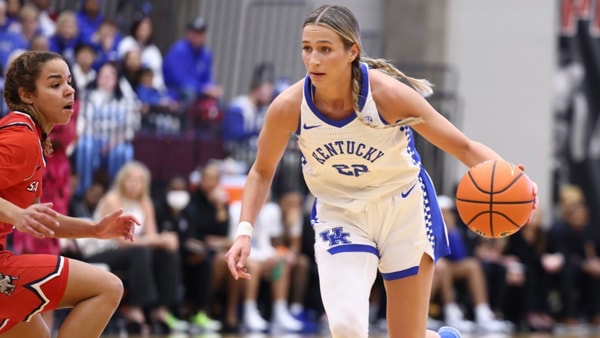
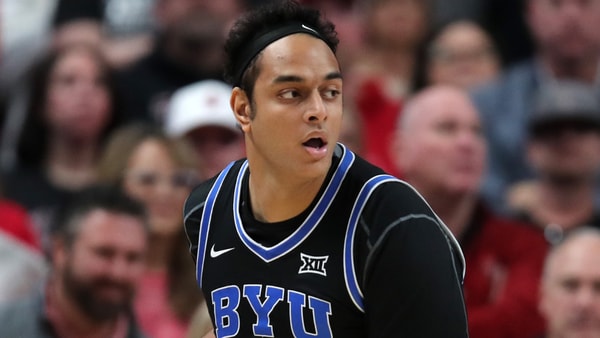

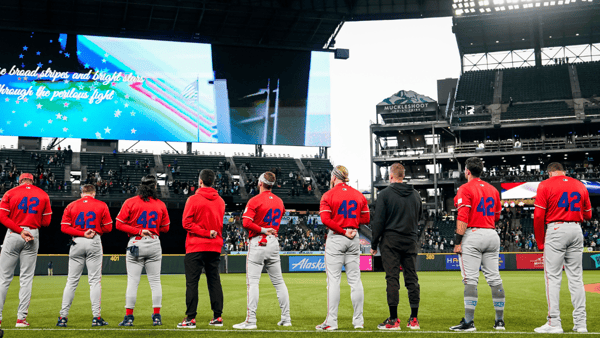
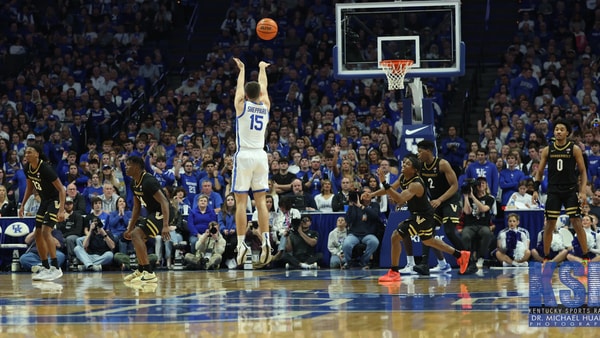
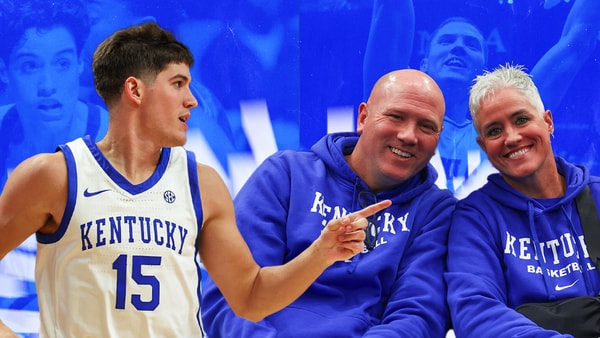
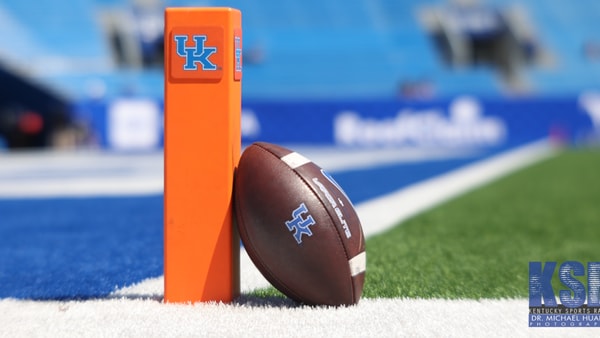

Discuss This Article
Comments have moved.
Join the conversation and talk about this article and all things Kentucky Sports in the new KSR Message Board.
KSBoard